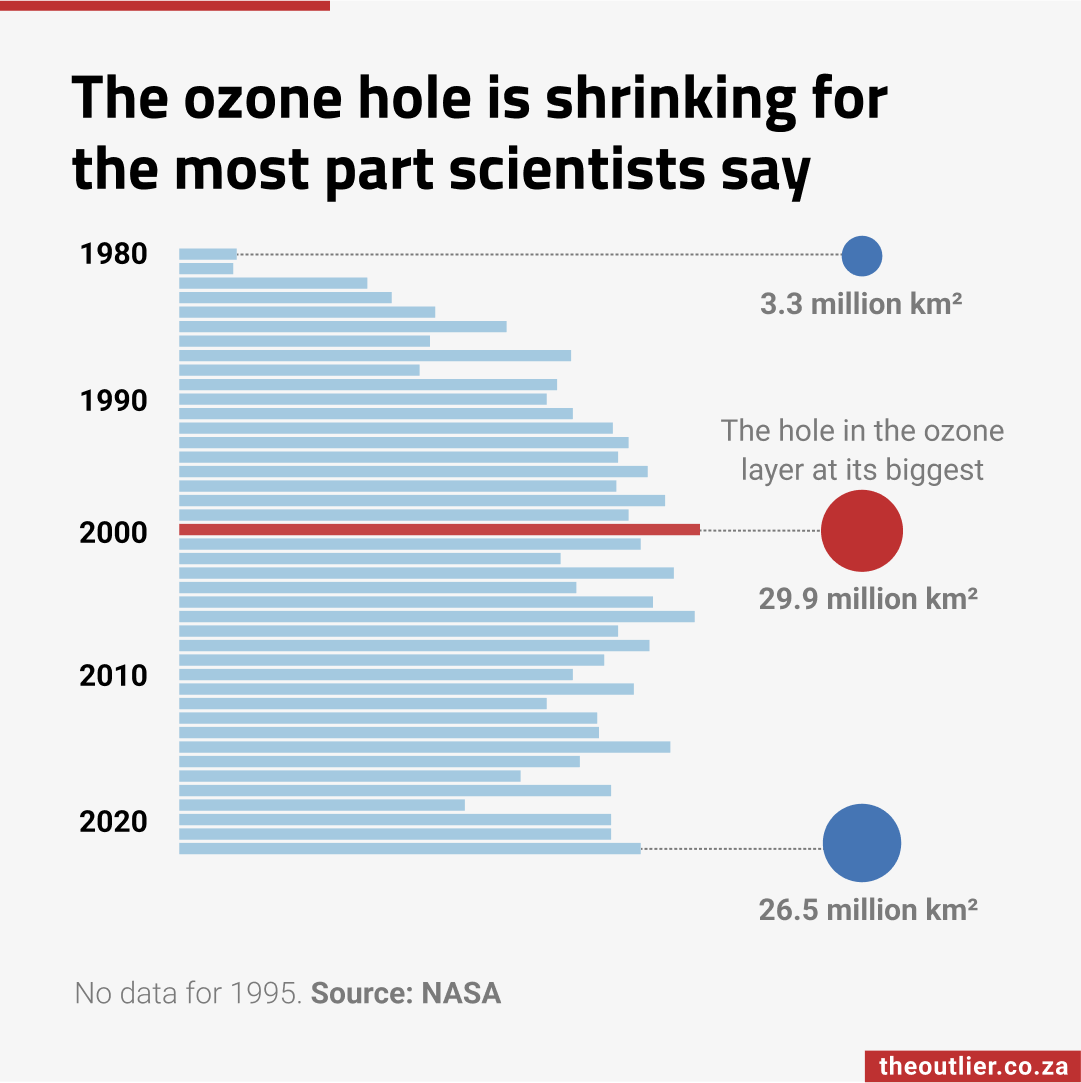
In the 1980s, scientists discovered a thinning in the ozone layer just above the Antarctic. This ‘ozone hole’ was bad news because UV-B radiation was reaching the Earth’s surface, causing health risks like skin cancer and damage to marine and plant life.
The ozone layer was damaged when humans used gases like chlorofluorocarbons (CFCs) in aerosol sprays and fridges. Nearly 99% of banned ozone-depleting chemicals have successfully been phased out.
The size of the hole fluctuates with seasonal temperature changes and as some old ozone-depleting substances influence its size. In colder years the hole in the ozone layer increases in size and it seems to shrink during warmer years, according to Nasa.
In the year 2000, the hole was at its biggest-ever recorded size – 29.9-million km². Between 2021 and 2022 the hole actually shrank by 1.5-million km² and by 2040 it is expected to be down to 1980 levels.
